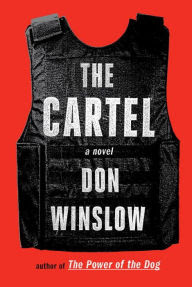 James Anderson was born in Seattle and raised in Oregon and the Pacific Northwest. He is a graduate of Reed College in Portland, Oregon, and received his Master’s Degree in Creative Writing from Pine Manor College in Boston. For many years he worked in book publishing. Other jobs have included logging, commercial fishing and, briefly, truck driver. He currently divides his time between Ashland, Oregon, and the Four Corners region of the American Southwest.
James Anderson was born in Seattle and raised in Oregon and the Pacific Northwest. He is a graduate of Reed College in Portland, Oregon, and received his Master’s Degree in Creative Writing from Pine Manor College in Boston. For many years he worked in book publishing. Other jobs have included logging, commercial fishing and, briefly, truck driver. He currently divides his time between Ashland, Oregon, and the Four Corners region of the American Southwest.Anderson's new novel is The Never-Open Desert Diner.
Recently I asked the author about what he was reading. His reply:
I am constantly reading and my choices are varied, not only authors, but fiction and nonfiction, poetry, sciences. Recently I wasVisit James Anderson's website.pleased to read that Andre Dubus, a truly fine writer, begins his writing sessions by reading poetry. The depth of an image and a truly original metaphor, along with syntactical invention and attention to rhythm (musicality) of language is something I appreciate and informs my prose.
Recently I read Tijuana Book of the Dead, poems by Luis Alberto Urrea, who is a triple threat in that he writes fiction, nonfiction and poetry equally well. In this new collection of poems the conversational can suddenly bloom into a lyrical rose where even plain language, everyday speech, is marshaled into service of a metaphor. Urrealeads the reader into dangerous human territory with humor and compassion.
Georgia, the new novel by Dawn Tripp, is a tour de force, at once ambitious stylistically and in terms of scope. The novel is a fictional autobiography of Georgia O’Keeffe that recounts in historically accurate narrative, O’Keeffe’s life. To compose a stirring internal narrative by one of the great artists of the 20th Century had to be daunting, and yet Tripp’s novel is daring and reads like narrative poetry that drives the reader forward in the story.
Other recent read includes Descent, a novel by Tim Johnston. This is a mystery/thriller that is brilliantly and thoughtfully written.
I do not put much stock in labels or genres. Damn fine writing cuts across genres. Descent does that. So does the debut novel by Idra Novey, Ways to Disappear, which often induces laughter and thought-provoking adventure in the same sentence.
My Book, The Movie: The Never-Open Desert Diner.
--Marshal Zeringue



















































